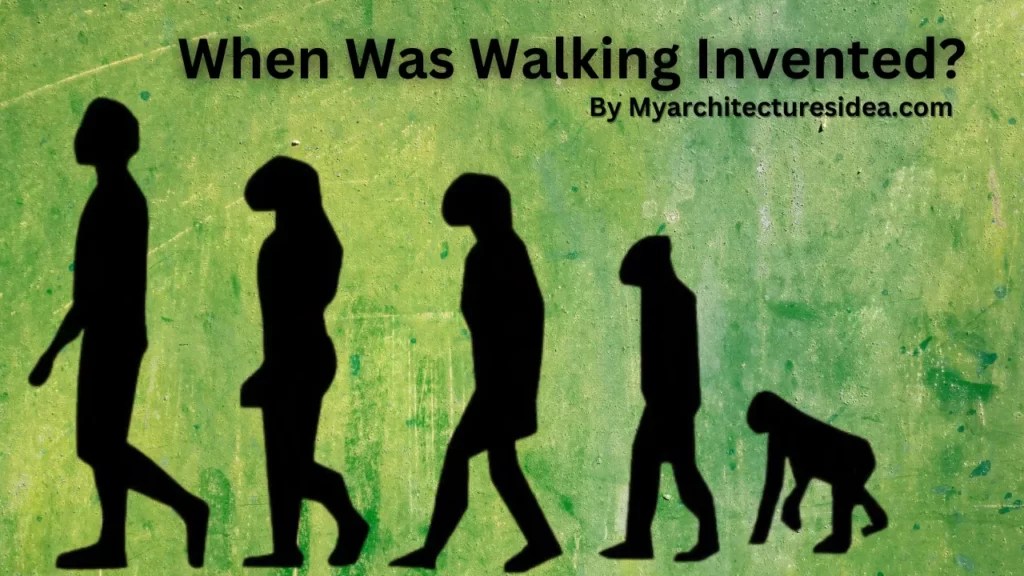Walking is one of the most fundamental human activities, a natural expression of mobility that connects us to our environment and each other. While it may seem like a simple task, the evolution of walking is a complex journey that has significant implications for our understanding of human development. This article delves into the intriguing question: when was walking invented? In doing so, we will explore the biological, cultural, and evolutionary factors that have shaped our ability to walk and how this fundamental skill has transformed over time.
Throughout history, walking has played a vital role in human existence. It is not only a means of transportation but also a form of expression and a subject of study in various fields such as anthropology, biology, and sociology. Understanding the origins of walking is essential for grasping the broader context of human evolution and development. In this exploration, we will address various aspects of walking, including its biological underpinnings, the impact of walking on human societies, and the broader implications for our understanding of what it means to be human.
As we embark on this journey to uncover the history of walking, we encourage you to think about how this simple act has influenced your life and the lives of those around you. When was walking invented, and what does it reveal about our past, our present, and our future? Let's dive deeper into this fascinating topic.
What Are the Biological Foundations of Walking?
Walking is a complex motor skill that involves a coordinated effort between the brain, muscles, and skeletal system. The biological foundations of walking can be traced back to our primate ancestors, who relied on different forms of locomotion. The ability to walk upright, or bipedalism, distinguishes humans from many other species. But when exactly did this transition occur?
When Did Our Ancestors Start Walking Upright?
Evidence suggests that the ability to walk upright emerged around 6 to 7 million years ago. Fossils of early hominins, such as Sahelanthropus tchadensis and Australopithecus afarensis, indicate that these species exhibited some bipedal traits. However, it was not until the appearance of Homo erectus, approximately 1.9 million years ago, that we see clear signs of efficient bipedal locomotion similar to modern humans.
How Did Walking Shape Human Evolution?
The shift to bipedalism had profound implications for human evolution. Walking on two legs freed the hands for tool use, allowed for greater mobility, and facilitated the ability to cover long distances in search of food and shelter. This adaptability played a critical role in the survival and success of early humans.
How Has Walking Evolved Over Time?
As humans evolved, so did our walking patterns. The development of agriculture, urbanization, and transportation technologies significantly influenced how we move. Today, walking remains an essential aspect of daily life, but it is also subject to change in response to modern challenges.
What Role Does Culture Play in Walking?
Cultural factors also shape our understanding and practice of walking. Different societies have varying customs and practices surrounding walking, including pilgrimage routes, communal walks, and recreational walking. These cultural dimensions enrich the experience of walking and highlight its significance beyond mere transportation.
When Was Walking Invented as a Cultural Practice?
The concept of walking as a cultural practice can be traced back to ancient civilizations, where walking was often associated with spirituality, ritual, and social interaction. For instance, in many indigenous cultures, walking is a means of connecting with the land and fostering community ties. As societies evolved, walking became integrated into cultural expressions, such as poetry, dance, and art.
What Are the Health Benefits of Walking?
In addition to its historical and cultural significance, walking offers numerous health benefits. Regular walking can improve cardiovascular health, enhance mental well-being, and promote weight management. As public health initiatives encourage more people to walk, understanding when walking was invented and its implications becomes increasingly relevant.
How Can Walking Be Integrated into Daily Life?
Incorporating walking into daily routines can be simple and rewarding. Here are some strategies to encourage more walking:
- Choose walking for short trips instead of driving.
- Take breaks during work to walk around.
- Participate in walking groups or community events.
- Set daily walking goals and track progress.
What Does the Future Hold for Walking?
As we look to the future, the evolution of walking continues. Innovations in transportation and urban planning, a growing focus on health and wellness, and advancements in technology all shape our relationship with walking. Understanding when walking was invented helps us appreciate its enduring importance in our lives.
In conclusion, walking is much more than a simple act of mobility. It is a reflection of our evolutionary history, a cultural practice, and a vital component of our health and well-being. The question of when walking was invented opens up a rich field of inquiry, revealing the complex interplay between biology, culture, and personal experience. By exploring this topic, we gain a deeper appreciation for the act of walking and its significance in our lives today and into the future.
You Might Also Like
Unveiling The Truth: Is Pumpkin A Fruit?Mastering The Art Of Braided Hair Half Up Half Down Styles
Discovering The Best Places To Visit In January
Discovering The Age Of Ronaldo Jr: A Glimpse Into His Life
Exploring The Mysteries Of The BG3 Chamber Of Justice
Article Recommendations
- Dbushnews1_0.xml<
- Whitney Mathers Partner
- Sidney Crosby Wife
- Puff Daddy Net Worth
- Ava Baroni Combs Recent Updates And Information The Shocking Truth Everyone Needs To Know
- Diddys Bulge
- Terence Crawford Wife
- Steve Cartisano Wiki
- Nancy Mckeon
- Gerard Butler Ex Wife


